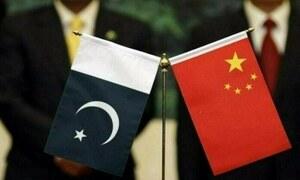A rebound in Japanese exports slowed in May as shipments to China deteriorated and US demand remained weak, suggesting hopes for a quick recovery in global demand may be premature. Though exports are now showing signs of bottoming out after a period of paralysis in the wake of the financial crisis, there has been little recovery in global demand except for buying partly based on windfall demand from stimulus packages around the world.
A revival in demand in major Western markets is key for a strong global rebound, but grim data from the United States and Europe on Monday suggested those economies may not yet be near a recovery. Many export-reliant Asian countries have also pinned their hopes on a resurgence in China.
"In light of Japan's demographics and industry structure, it's hard to expect a recovery driven by a large expansion in domestic demand. Therefore we will continue to rely on foreign demand," Bank of Japan policy board member Seiji Nakamura said on Wednesday after the trade data.
"Recovery in overseas economies will likely be moderate and it will take considerable time for the Japanese economy to make a full-fledged recovery," Nakamura said, adding that Japan could likely return to growth in the second quarter. The 40.9 percent fall in the value of Japanese exports in May from a year earlier was worse than the 39.1 percent fall markets had expected, though the bigger decline may also be due to a stronger yen.
Still, the pace of annual falls in exports has slowed after a 49.4 percent tumble in February, as companies have reduced their inventories, and analysts said the month-on-month comparisons showed a continued recovery in exports. The real export index, calculated by the Bank of Japan, climbed 5.1 percent in May following a 7.9 percent rise in April, but it is still down more than 30 percent from a year ago.
The trade surplus also rose to 299.8 billion yen, the highest level in a year, signalling that net exports will likely make a positive contribution to GDP in April-June, after having made a huge dent in the two preceding quarters.
"Looking at the trend on month we can see that export volume to both China and the West has picked up, thanks to stimulus in China and rapid progress in unwinding of excess inventories," said Tatsushi Shikano, senior economist at Mitsubishi UFJ Securities. "This suggests that May industrial output data will come out strong as expected next week."
The Bank of Japan's tankan business survey due out on July 1 is expected to show a rebound in the mood among big Japanese manufacturers, after industrial production jumped at its fastest rate in more than half a century in April. Expectations are growing that export-driven Japan may already be out of recession technically, with the economy seen growing 0.4 percent in April-June after four straight quarters of contraction through January-March.
But none of these signs have dispelled concerns that any recovery will be weak and possibly erratic, compared with the robust growth before the global crisis as US consumers no longer borrow heavily to spend. Japanese exports to the United States fell 45.5 percent in May from a year earlier, less than a 46.3 percent fall in April.
Exports of cars are coming back to life as Toyota Motor and other car makers resume exports, partly benefiting from incentive schemes to buy energy-efficient cars in many countries. But exports of general machinery have not shown any clear sign of a rebound. "This shows that many companies still do not expect a recovery in final demand and do not want to increase capital spending," said Azusa Kato, economist at BNP Paribas.
Shipments to China, one of the most vibrant economies in the world at the moment, fell 29.7 percent in May from a year earlier, faster than April's 25.9 percent decline due to declines in shipments of steel, kerosene and electronics parts.
Sliding sales of memory chips to Taiwan, Singapore and Hong Kong also hit exports to Asia, which were down 35.5 percent from a year earlier. With Japan's production still down about 30 percent from a year ago despite a recent recovery, many manufacturers are still considered to be operating below the break-even point.
If global demand remains weak, Japanese exporters may need to cut more jobs and production facilities, analysts say. That partly explains why the Bank of Japan has remained cautious about the economic outlook even after raising its economic assessment for two months running. BOJ Governor Masaaki Shirakawa has also said the bank expects the final demand to remain soft in the near future.
BR100
12,121
Increased By
344.9 (2.93%)
BR30
35,374
Increased By
964 (2.8%)
KSE100
113,955
Increased By
2628 (2.36%)
KSE30
34,878
Increased By
885.3 (2.6%)




















Comments
Comments are closed.